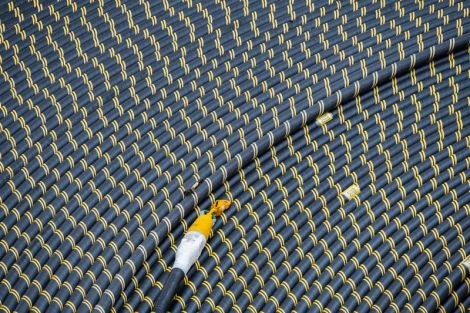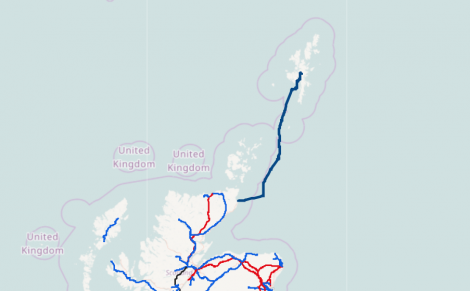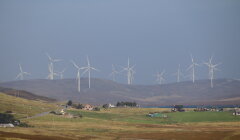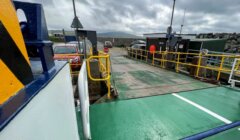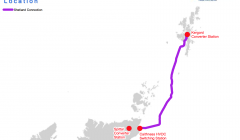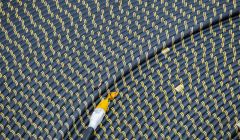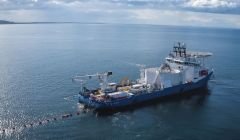Energy / Works licence application in for subsea cable
SHE Transmission says it anticipates the project could be undertaken without ‘significant impact’ on the environment
THE TEAM behind plans for a subsea power cable between Shetland the Scottish mainland which would allow large wind farms to export energy has submitted a works licence application for installing the link into Weisdale Voe.
The 600MW cable, which has yet to receive the final go-ahead from energy regular Ofgem, would allow proposed wind farm projects like Viking Energy to send power to the national grid.
SHE Transmission said in its application that the cable would “enable the export of renewable energy from Shetland, when there is a surplus in generation and the import of renewable energy to Shetland when there is insufficient generation in Shetland”.
The plans are for the 250km cable to run from Noss Head in Caithness to Weisdale Voe, with the link connecting to a proposed converter station at Upper Kergord.
An application for a marine licence from Marine Scotland, which is required for the installation and operation of submarine cables in Scottish waters, was also recently submitted, while moves are being made to progress with the already approved planning permission for the converter station.
The works licence application has been submitted to Shetland Islands Council’s planning department, which is required for proposals up to 12 nautical miles from shore, and it offers more details about what will be involved at Weisdale Voe when work is undertaken to lay the cable.
The installation of the link will involve the creation of a landfall in Weisdale Voe, where buried ducts would be installed under the shoreline to allow the cables to be pulled ashore.
It would also see the installation and lay of the cable bundle, with the cables being pulled ashore from the cable lay vessel through the pre-installed ducts.
The vessel would then lay the cable on the seabed, along the route southwards out of the voe.
Become a member of Shetland News
After the cable is laid on the seabed a trenching tool would be used to lower the cable into the seabed sediment.
Where it is not possible to lower the cable into the seabed crushed rock will be used to create a barrier over the cable.
A post-installation survey would be used to confirm that the burial and protection meets the required standards.
Guard vessels would also be used to protect the cable between lay and burial and will be used to engage with other vessels in the area.
The link would consist of two separate power cables and a separate fibre optic communications cable.
Each HVDC cable will be around 150mm in diameter, with the optic cable 25mm in diameter.
An environmental appraisal on the HVDC link has been put together as part of the licence applications and SHE Transmission said in conclusion that it anticipates the project would be “conducted without significant impact on any environmental or societal receptor”.
The company, which is part of Scottish and Southern Electricity Networks (SSEN), looked at a range of factors, including possible impacts on the seabed, wildlife, fishing and offshore installations.
The report notes that that “cable installation works that will temporary disturb the seabed, including pre-sweeping of sandwaves, boulder clearance, pre-lay grapnel use, trenching, and anchor deployment will lead to a temporary loss of habitat”.
This may “affect sensitive seabed features such as horse mussels and ocean quahog along the proposed cable installation corridor where they cannot be avoided through route design”, the applicant said.
The horse mussel bed protected within the Noss Head marine protected area off Caithness, which is home to the largest horse mussel bed in Scotland, is said to be of “particular concern, however, cable burial and rock protection will be avoided in this area”.
The environmental assessment also said the project has the potential to affect birds through issues like physical disturbance/displacement and changes in distribution of prey species.
Seabird sensitivity “ranges from negligible to high, however due to the local spatial extent, short term duration, intermittency and high reversibility of the majority of the project effects, no significant impacts have been identified”.
In reference to the possible effects on fishing in the seas around where the cable will be laid, SHE Transmission said activity would be displaced during the installation activities.
However, it is “committed to minimising the duration of necessary safety exclusion zones. Due to the localised nature and short duration of activities, no significant impact is anticipated”.
For shipping, “no hazards were identified to be unacceptable, with all being either tolerable or broadly acceptable”.
There is a recommendation to reduce collision risk in the busiest locations through using guard vessels.
The link, meanwhile, is dependent on the 103-turbine, SSE-backed Viking Energy wind farm going ahead.
Regulator Ofgem was previously minded to approve the cable, but when Viking Energy failed in a bid for government subsidy last year it called for revised proposals.
It comes as the Lerwick power station is preparing to close by 2025.
Become a member of Shetland News
Shetland News is asking its readers to consider paying for membership to get additional perks:
- Removal of third-party ads;
- Bookmark posts to read later;
- Exclusive curated weekly newsletter;
- Hide membership messages;
- Comments open for discussion.
If you appreciate what we do and feel strongly about impartial local journalism, then please become a member of Shetland News by either making a single payment, or setting up a monthly, quarterly or yearly subscription.






